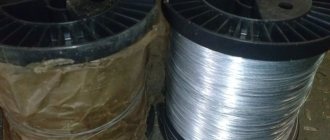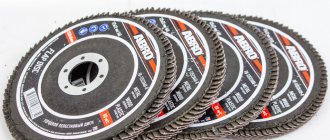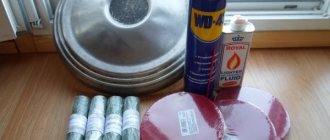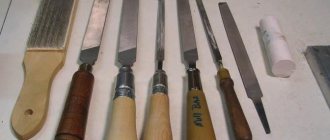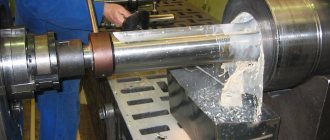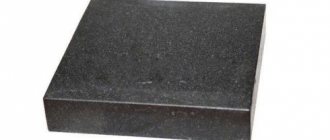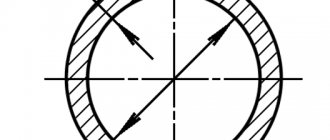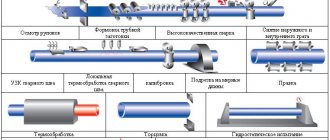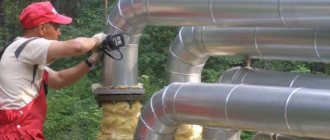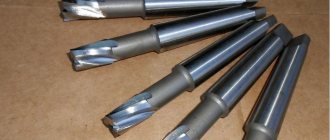Welding seams must be of high quality in order to obtain a reliable, durable connection of parts and assemblies. During their creation, safety measures must be observed and the health of the welder must be maintained. The eyes are most exposed to the harmful effects of bright radiation and high temperatures that occur during such work. Their protection is provided by a light filter for the welding helmet.
The work of a welder is dangerous and special equipment is used for protection.
GOST regulating the characteristics of light filters
There is a special GOST 12.4.035-78 that regulates the requirements for welding helmets. Although it was developed more than 40 years ago, during this time the necessary changes were made to it, so it is still in effect today. Here we describe the basic technical requirements for welding helmets, goggles, shields, the light filters used in them and other important nuances.
There is a GOST with requirements for light filters.
List of markings
When indicating technical characteristics, the following designations are applied to the mask:
- The degree of shading is the main indicator indicating for what work the specified protective glass is suitable. In Russia, this parameter is marked with the letter C, and abroad – DIN. The higher the number, the lower the glass throughput and vice versa.
- Level of light dispersion. It characterizes the speed of the filter’s response to changes in the light flux, which increases with increasing welding current. This indicator is taken into account only for models with auto-darkening filters. There are 3 degrees, if the number 1 is indicated, then the protection works quickly, the image clarity is high.
- Uniformity of shading. In the production of colored glass, compounds of different metals are used. If the technology has been violated, they are poorly homogenized, so the material turns out to be heterogeneous, as a result, some areas of the filter will be darkened more, others less. The guarantee of high quality is 1st class.
- Optical view of glass. This indicator is influenced by the materials used for its manufacture. If the number 1 is indicated, then this filter provides darkness regardless of the angle at which the light beam hits it. The welder needs to think about the production process, and not about how to correctly turn his head in relation to the work site.
For high-quality eye protection, choose masks from reliable manufacturers with appropriate markings.
Table of correspondence between welding method and degree of darkness
According to international standards, the darkening level of filters is indicated by numbers from 9 to 13 DIN. They correspond to the Russian classification C4-C8. For example, 9 DIN = C4, and 13 DIN = C8.
Filter shades are indicated by numbers.
When choosing the degree of darkness, be sure to take into account the welding method.
To simplify this process, they act in accordance with the recommendations of international EN 379-2003, Russian GOST R 12.4.035-78.
Table: recommended shading values depending on the type of welding used
| Welding method | Current, A | |||||||
| 40 | 70 | 125 | 175 | 225 | 300 | 400 | 500 | |
| Piece electrode | 8 | 9 | 10 | 11 | 12 | 12 | 13 | 14 |
| Semi-automatic, in protective gases (carbon dioxide, nitrogen) | 8 | 9 | 10 | 11 | 12 | 12 | 13 | 13 |
| Tungsten electrode in argon environment | 9 | 10 | 10 | 11 | 12 | 12 | 14 | 14 |
| Semi-automatic, in protective gases (helium, argon) | 8 | 9 | 10 | 11 | 11 | 12 | 13 | 14 |
| MIG/with light alloys | 9 | 9 | 10 | 11 | 12 | 12 | 14 | 14 |
| Arc cutting | 10 | 10 | 10 | 11 | 12 | 13 | 14 | 15 |
| Plasma cutting | – | – | 10 | 12 | 12 | 13 | – | – |
| Microplasma cutting | 8 | 8 | 10 | 11 | 12 | 12 | – | – |
We recommend reading Features of setting up the Chameleon welding helmet
Characteristics of welding glasses
When welding metals, powerful infrared and ultraviolet radiation occurs, and visible light rays are actively formed.
The higher the current in the working zone of the arc, the higher the flux intensity. Visible light exceeds the maximum norm by tens of thousands of times. Ultraviolet radiation from welding can be tolerated from 6 s to 45 s without harm to the eyes, depending on the distance and arc current.
The effect of infrared rays is not immediately noticeable, but they also cause great harm. Protective glass, the use of which is absolutely necessary for a welder, can reduce damage to health. The rules of safe work clearly remind us of this.
Dimming methods
The function of welding glass is to reduce the intensity of radiation entering the eyes. There are several options for achieving this result.
The easiest way is to darken the glass of the welding helmet. To reduce throughput, metal impurities are added to the glass mass during the production process: copper or nickel.
The method has long been known, but not very convenient for the welder. At the beginning of work, a person sees almost nothing at all through such glass. Then, when the arc flares up, visibility becomes good.
It is much more convenient to use a light filter that changes the throughput depending on the intensity of radiation. Welding glasses with the possibility of a light filter are light at the beginning of work, then, as the arc current increases, they gradually darken. A self-regulating filter is called a chameleon.
The action of "chameleons"
The possibility of using chameleon glass for welding is determined by its structure. Self-adjusting glasses consist of several layers:
- polarizing film reflects the light radiation of the arc;
- the main one is a liquid crystal layer, the molecules of which are capable of rotating at different angles depending on the intensity of the light flux;
- the next layer reduces the intensity of UV and thermal (IR) rays;
- external protective glass protects against mechanical shocks and fire, and has high fire-resistant characteristics.
With minimal lighting, the darkening of welding glasses is 4 DIN. After the electric arc flares up, the darkening can increase to 13 DIN. The darkening speed of different welding glasses differs.
For the best models, the time it takes for the filter to react is 10-5 seconds. The maximum time interval for a chameleon to react to welding is 0.033 seconds. This is also a good indicator, allowing you to significantly reduce the strain on the welder’s eyes.
Optical glasses
To perform particularly delicate operations or for routine work performed by a welder with poor vision, optical glasses are used. They enlarge the image.
The problem is relevant not because people with poor eyesight enter the profession, but because it deteriorates over time. As a result, an experienced virtuoso welder, who can do filigree work, has reduced visual acuity. The optics built into the mask come to the rescue.
The maximum capabilities of optical glasses for welding are 3 diopters. Welding glasses have a standard shape and size. They work well with all masks.
The market for protective glass for welders is constantly evolving. When choosing, you should take into account the specifics of the upcoming process and the employee’s level of vision.
Important information is contained in the marking of the welding product. Having delved into the essence of the designations, you can choose the optimal model that allows you to do the job efficiently and protect your eyes.
What do the symbols say?
National and international estimates of the degree of obscuration differ. In Russia, indicators vary theoretically from C1 to C13. In practice, welding glasses with designations from C4 to C8 are used, the capabilities of which are quite sufficient for all types of welding.
https://www.youtube.com/watch?v=e_jPUis7iJg
The situation is similar in international standards. Theoretically, there are indications for welding glasses from 7 DIN to 16 DIN. In practice, glasses with values from 8 DIN to 14 DIN are used.
More information is contained in the labeling. It most often includes 4 digits.
The first digit determines the optical characteristics of the glass. They depend on the source and auxiliary materials. Belonging to class 1 means that the object through the glass is clearly visible without distortion.
The second number characterizes the ability of liquid crystals to change orientation in space in response to an increase in light flux. If 1 is indicated in the second place, a rapid darkening occurs during work, through which the work area is clearly visible without clouding.
The third number is an indicator of the uniformity of welding glass. The starting material is a mixture. With incorrect technologies, the mass may be poorly homogenized. The resulting glass will not be uniform. Roughly speaking, you can see well through it in the center, but worse on the sides or corners. 1st class – guarantee of excellent quality.
The last fourth digit is a specific glass indicator for welding helmets. If the number 1 is indicated, it means that the glass will begin to darken when a light beam hits it from any angle. This is important for stable operation. The welder should not think about what position, at what angle to the work area he should stand so that the glass darkens.
If you need high-quality eye protection, you should purchase labeled products made by well-known manufacturers. In this case, special experience is extremely important. There is no place for amateur manufacturers in the protective products market.
Additional designations
Particularly punctual manufacturers sometimes indicate additional information in addition to the basic information on welding glasses. This marking contains letters and numbers:
- U is the first letter of the word “hardened”. If there is such a letter on the welding glasses, then they will withstand the mechanical impact of solid particles flying with an energy of up to 0.6 J;
- G-1 designates glass for both welders and his assistants when performing electric welding in open spaces;
- G-2 is written on products for gas welders when working at medium power;
- G-3 informs about the purpose of glass for welders performing powerful welding;
- The letter D denotes glass for blast furnace workers. But this is a separate topic.
- P denotes products for rolling mill workers;
- B - 1 says that the glasses are intended for auxiliary work not related to welding, which is performed in bright sun;
- B-2 says that welding glasses are used for auxiliary work in all types of welding, performed both on the street and in the workshop.
Taking into account all the information provided, and having received additional advice from a representative of the manufacturer or supplier, you can wisely select the necessary protective glasses.
Selecting automatic filters
Protective welding glasses have been produced for decades. Generations of welders have used these and were happy with them, welding the hulls of spaceships and nuclear submarines. Modern glasses are more advanced and much more convenient to use.
However, professionals choose masks with automatic light filters. The possibilities of this equipment are great, the advantages are undeniable.
The automatic light filter is securely fixed on the mask. Fastening is done simply with a screwdriver and 2 screws. The energy source is solar or conventional batteries, which are always commercially available. Models with two types of batteries built into one mask are popular. The presence of 3 regulators greatly simplifies control.
On the outside of the mask or at the top left of the filter itself there is a dimming intensity control. The second regulator can set the required sensitivity - the value of the intensity of the rays from which the dimming will begin.
For working outside on a sunny day, you can choose one indicator, for night welding - another. The third knob allows you to set the time after which the darkening will begin.
https://www.youtube.com/watch?v=s5oUy7ZzRRI
The combination of all the capabilities of the automatic light filter provides convenient conditions for safe work.
To successfully select a model, you need to evaluate all potential loads and possible types of work; Check the welder's vision level.
Safety glasses should be comfortable. Incorrectly chosen parameters of darkness and dioptres can provoke a gradual deterioration of vision; lead to a violation of welding technology, in the worst case – cause damage to the retina and cornea of the eyes.
Types of protective welding masks
Now there are many different welding helmets on sale, so before purchasing you need to understand their purpose and select a model in accordance with the type of work being performed.
With fixed filter
Such models were popular before. They have a simple fastening system. To assess the condition of the seam and the overall result of the work, the welder must constantly raise the mask by hand and lower it by nodding his head. The advantage of this solution is the simplicity of the design. But when the mask is lifted, the eyes remain completely unprotected.
Models with a fixed filter used to be popular.
When removing slag, there is a danger of damaging your eyesight, so you must wear protective glasses separately.
With rising glass
This is a more convenient model. Manufacturers have taken care to provide better protection for the welder. After the filters for the masks are lifted, a plastic shield remains, which protects against the possibility of damage by scale while cleaning the seam from slag.
Welding helmet with rising glass.
Chameleon masks
It uses liquid crystal filters that automatically change the dimming level in accordance with the power of the light flux. The chameleon masks are adjusted taking into account the brightness and other characteristics of the welding arc.
They consist of the following elements:
- several layers of crystals, between which there is polymer protection;
- power source (batteries or solar cells);
- arc detection sensors - in most models there are 2 of them, but in expensive ones there are more;
- control panel - with its help you set the degree of darkness, sensitivity, time.
Chameleon masks use liquid crystal filters.
This light filter is attached to the shield with screws; if necessary, it is easy to replace.
Masks with filter and air supply system
If work is performed in difficult conditions and a lot of harmful gases are released, it is better to use masks equipped with an air supply system. Outwardly, they resemble a gas mask. Some of them can be used for underwater welding. Due to their complex design, they are more expensive than other models.
Welding mask with air supply system.
Choosing a light filter for a welder's mask
The “Chameleon” welding mask got its name thanks to the filter, which automatically darkens as the intensity of the light flux increases. This significantly facilitates the welding process and makes it more comfortable than with old-style masks.
Until welding begins, the filter is almost transparent, but as soon as the welder ignites the arc, the mask automatically darkens, protecting vision from burns. The characteristics of this mask largely depend on the light filters used for welding masks.
Let's consider this issue in more detail.
Types of filters
The main purpose of light filters for a welder's mask is to protect the eyes from ultraviolet and infrared radiation, thermal effects and metal splashes during welding. Various filters cope with this:
- Colored glass;
- With automatic dimming;
- Polymer.
They differ in a number of characteristics and, of course, price.
- Tinted glasses are protection with a fixed tint and are characterized by low cost. To prevent the glass from transmitting harmful radiation, various impurities are added to it, the amount of which determines the darkness of the filter;
- Auto-darkening filters for welding helmets, or so-called chameleons, are based on a liquid crystal screen. When the brightness of the light changes, the liquid crystals rearrange, allowing the dimming to change. Modern glass contains 1-3 layers of such screens.
- Welding filters based on polymer materials can be darkened due to the special plasticity of polymers.
Light filter "Chameleon"
The light filter for the Chameleon welding helmet represents a symbiosis of the latest achievements in microelectronics, optics, liquid crystal technology and solar panels. This filter is a multilayer element, which contains the following components:
- Liquid crystal cells. The more there are, the better the quality of the glass;
- Filters that do not transmit ultraviolet and infrared radiation;
- Polarizing film;
- Welding arc location sensors. As a rule, there are 2-4 of them. A filter with a large number of similar sensors is preferable;
- Protective glass;
- Power supplies. These can be lithium batteries, solar panels, or a symbiosis of these sources.
An important advantage of this filter is that if the arc detection sensors do not have time to operate and darken the mask, harmful radiation will still not penetrate the glass. Therefore, when choosing such a mask, it is important to pay attention to the quality and availability of such filters.
Light filters for welding helmets: markings
The darkening of the filter is measured in indicators. There are domestic and international markings, which relate to each other in a special way:
International classification (DIN)Russian classification (C)
| 9DIN | C4 |
| 10DIN | C4-C5 |
| 11DIN | C5 |
| 12DIN | C6-C7 |
| 13DIN | C8 |
You often find filters marked with the letter “E”. Their selection must be made based on the strength of the welding current:
MarkingWelding current strength
| E1 | 30-75A |
| E2 | 75-200A |
| E3 | 200-400A |
| E4 | More than 400A |
| E5 | More than 400A in protective gas environment |
When choosing a filter, you may encounter various other markings. We suggest you familiarize yourself with the main ones, as this will help you choose the best filter for a particular situation:
- “U” means that the glass has been additionally strengthened with minerals. They protect the filter from solid particles that may enter it during welding;
- “G1/G2/G3” - this marking indicates that the glass is designed for gas welding of low/medium/high power;
- “D1/D2/D3” is placed on light filters that are designed for use near blast furnaces, glass melting machines, and forges;
- “P1/P2/P3” - metallurgical work at temperatures of 1200/1500°C;
- “B1/B2” for auxiliary work in open areas.
Selecting a filter
The modern market offers a wide variety of filters with different parameters. Our instructions for choosing a mask can help you determine the right filter:
- The first step is to decide on the type of filter. If welding is carried out regularly, then the choice should definitely be made in favor of the Chameleon;
- It is important to keep the filter size in mind. The larger it is, the better the visibility and the more comfortable the welding work;
- The chameleon light filter for a welding helmet has such an important characteristic as response time. It can range from 0.03 to 0.0001 seconds. It is worth remembering that at lower temperatures this value will increase;
- It is better to opt for a universal filter with shading 9-13DIN. Please note that many models present a maximum dimming value of 11;
- Smooth adjustment is more comfortable to use than step adjustment;
- An important characteristic of a filter is its optical class, that is, the clarity and purity of the glass.
Let's take a closer look at what the optical class of a filter is and how it is marked. This indicator is marked with four numbers separated by a slash. Each position can contain a number from 1 to 3, where 1 is the best option and 3 is the worst.
Let's consider all positions in order;
- The optical grade of a filter is an indication of how clear the vision will be through the glass. This indicator depends on the quality of the materials used and workmanship;
- Dispersion depends on the liquid crystal elements. The possible turbidity of the image depends on this indicator;
- Homogeneity indicates uniform darkness of the filter. Uniform dimming is the most comfortable;
- The angular dependence indicates the viewing angle.
Thus, the highest quality and most comfortable filter to use will be a filter marked 1/1/1/1 or 1/1/1/2, which is also approved for use by professional welders. Amateurs are recommended to purchase filters with optical characteristics of at least 2 units for each parameter.
Features of operation
Modern Chameleon type filters require special handling, as they are quite fragile:
- The filter is afraid of sudden mechanical influences. You should not throw the mask or knock on it;
- Glass is cared for using a soft cloth, which, if necessary, can be moistened only with clean water;
- It is important to note that these filters have the ability to “slow down” at sub-zero temperatures. As a rule, at temperatures below -5°C, the filter response speed noticeably decreases. This must be taken into account when using the mask in winter.
Let's sum it up
At the moment, there are various light filters for welding helmets - from cheap tinted glasses to ultra-modern automatic filters like Chameleon. Depending on the quality of the mask, the quality and comfort of the welding work performed mainly changes.
The selection of a welding filter should be made taking into account its characteristics, which are presented in the form of special markings. It indicates for what welding and current strength a particular filter is suitable.
An important characteristic of protective glass is its optical performance. When purchasing a welding helmet, it is also recommended to familiarize yourself with the relevant quality certificates.
This will help you make the right choice and get high-quality protection for welding work.
Types of filters
Initially, simple tinted glass was used to protect against negative factors arising during welding, but they were ineffective and made such work more difficult. New technologies are constantly emerging, so filters have been invented that reliably protect the eyes and provide sufficient visibility.
Constant dimming
During production, copper and nickel are added to the composition of such glasses. This allows them to reflect most of the ultraviolet and infrared radiation. When purchasing such glass, take into account the model of the mask, because seats have different parameters. Based on the marking, a product is selected that corresponds to the type of work being performed. If the type of welding changes, you have to insert another light filter into the mask, and this is time-consuming and inconvenient.
When making permanent darkening filters, copper is added.
Chameleon screens
A professional welder has from 1 to 3 such glasses that can regulate the darkening. Making the settings does not take much time, it is easy to do. When changing the type of welding, there is no need to rearrange the glass, just reconfigure it. This is convenient, but the cost of such screens is high.
Many factors influence quality work. Chameleon screens are sensitive to:
- temperature changes;
- vibrations;
- shock loads;
- cleanliness of the outer glass;
- long period of non-use.
Chameleon screens are capable of adjusting dimming.
There is no need to remove such a mask after welding work. Without bright lighting, the glass becomes transparent and does not interfere with the view when removing slag.
Glass with diopters
To work with small parts, special magnifying lenses are installed. They are also needed in cases where the welder has poor eyesight. It is inconvenient to wear glasses under a mask, so he selects glasses with the necessary diopters. Such elements cannot protect the eyes on their own; they are installed together with other light filters.
Glass for welding helmet with diopters.
Light filter for a welding helmet: what determines the choice?
During the electric welding process, the arc and melting metal emit heat and strong light. Only light filters for welding masks can protect a worker’s eyes.
They transmit a small part of the radiation, allowing you to see the weld pool, the electric arc and control the process of joining the metal. The eyes are protected from harmful radiation.
For each type of welding work, a different type of filter is selected.
Types of filters by purpose
Different types of welding differ in the type and intensity of radiation. In addition to the main worker, an assistant is often involved in the process, who is also in close proximity to the arc and burning gas. Depending on the type of work performed, glass for a welder’s mask is divided into types:
- electric welding and electric gas welding, E1 – E5;
- gas welding and gas cutting, G1 – G3;
- for auxiliary workers, B1 - B3.
For the chameleon mask, the filters are designated C3 – C8. They are used for different types of welding.
Protective glasses can be inserted with masks, goggles and visors . Goggles can only be used when welding with gas; they do not protect the face from burns. You have to hold the shield with one hand, which limits the ability to work intensively.
Why use filters
It is enough to look at a burning incandescent light bulb for a few seconds, and its shape will be reflected on the retina. When a person looks away, he still sees this spiral everywhere for a long time.
Hot molten metal glows and emits more eye-irritating rays than an incandescent light bulb. As a result, the cornea and lens are damaged.
They suffer severe burns, which over time can lead to blindness.
Using a welding filter allows you to preserve your vision and see the most necessary elements of welding.
Types of light filters for electric welding
The first protective means for the organs of vision were dark glasses that did not transmit light. With the development of technology, convenient light filters have appeared that can change the degree of darkness depending on the radiation.
Each type has its own characteristics with positive qualities and disadvantages.
With constant
Nickel or copper is added to glass during its manufacture. They significantly reduce the amount of ultraviolet and infrared rays, reflecting them like a mirror .
You can choose the right glass based on the work to be done, markings and shading coefficient. In addition, you need to know exactly the fit size on the mask. Because glass has different sizes.
With replaceable
Polymer films can be inserted into light filters, and they change their darkening depending on the brightness of the light falling on the surface . According to this principle, glasses for everyday use, nicknamed Chameleon, are created. The disadvantage of polymer filters is their response time. When welding begins, the first rays may enter the eyes.
Such filters are additionally equipped with a polarizing protective layer that cuts off UV and IR radiation.
Polymer filters with replaceable shading are convenient for use in gas welding and cutting, where the metal gradually melts.
Diopter lenses
Diopter lenses are installed on masks, but are not independent filters. They are used as a magnifying glass when working with small parts . If a welder has poor eyesight, he should choose glass with the appropriate diopters to constantly use, since wearing ordinary glasses under a mask is problematic.
For the chameleon mask
The light filter for the chameleon mask is an electronic mechanism powered by a power supply . The main filter element is liquid crystal film. When light hits it, the crystals change their polarization and do not allow certain rays to pass through. The activity of liquid crystals depends on the strength of the current supplied to the film.
The quality of the light filter in a chameleon mask can depend on many factors. The liquid crystal base is sensitive:
- to temperature changes;
- long-term non-use;
- vibrations;
- dynamic loads;
- cleanliness of the outer glass.
The choice of mask depends on the type of work performed. Transparency adjustment is made within a certain range. The degree of protection is determined by the number of films in the filter, which can be from 1 to 3 pieces.
The filter is charged from a replaceable lithium battery or a built-in solar panel located on the front side of the mask above the glass.
The main advantage of the “chameleon” filter is that you don’t need to remove the mask to see the welding site and remove the slag. It becomes transparent in the absence of bright radiation.
How to choose
Light filters for welding masks can be selected by marking . It has 4 digits. Each of them characterizes a certain indicator.
- Optical class number. Determines the clarity of the image through the filter.
- Level of light scattering. As the value of the number increases, the image received by the eyes deteriorates, the picture becomes cloudy. Best seen with marking value 1.
- The level of darkness and the uniformity of its distribution over all glass surfaces.
- Angular dependence of darkening, its degree when rotated by 15⁰.
Welding glass markings indicate how well the arc will be visible and the degree of eye protection while welding, including turning your head slightly.
Criteria for selecting welding filters
To choose a product yourself, take into account the following characteristics:
- Appearance. There must be no damage. The documentation must include information about the optical class of filters and the manufacturer. If this data is not available, and you only learn the characteristics from the seller’s words, then it is better to refuse to purchase such a mask.
- Number of settings, their varieties. High-quality chameleon glass has 3 adjustable parameters: dimming level, light sensitivity level and shutdown delay time.
- Dimensions. In different models of masks, the size of the glass seat may vary, but most often it is 110x90 or 120x70 mm. This is taken into account when purchasing a replacement filter, otherwise you will not be able to insert it into its place.
- Glass type. Its dimming can be constant or change with fluctuations in the intensity of the luminous flux. If the same welding work is carried out, then a permanent darkening filter is used, because it is cheap, but can still protect the welder’s eyes. When working with frequently changing current strength, it is better to purchase a chameleon.
- Additional protection. A polymer film is glued to the glass, which protects it from mechanical damage resulting from impacts from various solid particles and objects.
We recommend reading: How to install a hood above a welding table
To choose a light filter yourself, you need to consider the type of glass.
Light filters for welding helmets: how to choose the right one, types and types, their characteristics
When performing welding work, you can sometimes do without boots or overalls, but it is impossible to weld without a mask; its use is mandatory. A welding mask is used to protect the eyes from inflammation and vision impairment, and the skin from damage.
For such protection, special replaceable filters are used. Their choice is huge, and selection must be made based on work requirements and budgetary possibilities.
You will learn how to choose a protective light filter for welding and what types of filters exist.
Types of filters
There are only three main types of protective glass: with a constant darkening value, with variable darkening (they are also called “chameleons”) and dioptric filters.
Let's look at them.
Constantly dimming filters
This is the classic and simplest type. They are made from glass with the addition of special materials.
Their degree of darkening varies, and due to the fact that the darkening is constant, you will have to select filters separately for each type of welding work.
They are quite durable and can be purchased at a very reasonable price, but they are not easy to use. For example, in order to see something during pauses in welding, the mask will have to be removed.
And you will have to interrupt during welding quite often, for example, to check the seam, strip the metal or electrode.
Variable dimming filters
Models of this type, which are commonly called “chameleons,” are more convenient to use than conventional ones. The degree of their darkening is adjusted automatically depending on the type of welding performed. This is a definite plus, but this is achieved by complicating the design.
A component of this design is a liquid crystal screen, which requires power. Some models use solar panels for charging. Thanks to their design, they are functional and very easy to use.
The mask equipped with them can not be raised at all during the welding process. As soon as the welding arc goes out, the filter will instantly become lighter.
The disadvantages of this type are the relatively high price and the need to handle the filter very carefully during operation.
Diopter filters
Many welders use glasses in their lives. However, you most likely will not be able to wear glasses and a mask at the same time. In such cases, diopter filters will come in handy.
They are plastic lenses and are selected individually, like glasses in a pharmacy. They operate in the same way as a magnifying glass, so diopter filters are also used with normal vision when working with small details.
Let's start choosing
When choosing filters for welding, we must clearly understand what equipment and components we will use for welding. We also need to understand how much we can spend on this component.
If you are on a limited budget, we recommend choosing an inexpensive filter with permanent dimming. If ease of use is more important to you than financial savings, buy “chameleons”.
The cost of models may vary significantly, but we do not advise you to choose cheap “chameleons”. They are often of poor quality, are short-lived, and can end up wasting your money.
When selecting permanent dimming filters, the decisive factors should be the thickness of the electrode used and the current value. When welding with a thin electrode in very dark conditions, you risk not being able to see anything in the welding zone.
Therefore, the smaller the diameter of the electrode we use, the lighter the filter we need.
Welding filters are marked as follows: 9 -10 DIN and higher, or C4 and higher.
When purchasing filters of the type with variable dimming, first of all pay attention to the active dimming indicator. The recommended score is 9 and above.
The speed of darkening and lightening is also important. The higher these indicators are, the better.
When choosing diopter filters for welding, you need to consider your vision parameters. Never choose them at random. It is advisable to first consult a doctor, ideally get a prescription from him.
Another important point when selecting light filters is to check whether they fit your welding helmet. Some manufacturers use unique mounts, and the model you choose may not match the mount on your mask.
Characteristics tables for accurate selection
When choosing a mask, be sure to take into account the type and purpose of the light filter installed in it. To facilitate this process, special tables are used.
Table: purpose of glass installed in the welding helmet
| Title of works | Glass marking |
| Auxiliary processes when performing gas welding work | B1, B2, B3 |
| Welding work | G1, G2, G3 |
| Electric welding | from E1 to E5 |
| For all chameleon glasses | from C3 to C8 |
Don't buy a cheap product.
If you don’t have the money for a good chameleon glass, it’s better to buy a high-quality model with permanent dimming.
Even if the light filter for a welder’s mask has all the documentation, when purchasing it is better to check whether it is a fake or not. It is enough to point the glass at the switched on lamp. If the dimming level is C4, then the filament should be clearly visible through the filter. When marked C8, it will be almost invisible. If there is no difference, then it is better to refuse to purchase a light filter.
Types of glass
There are three main types of glasses for welding helmets on the welding equipment market:
- With constant or constant darkness.
- With variable dimming (they are called chameleons).
- Magnifying glasses with diopters.
Glass with constant darkness
The darkening of permanent filters is created by adding copper and nickel metals to the product. Most often they are used in gas and electric arc welding machines. If the current changes frequently during work, the welder needs to quickly select the right filter. This is inconvenient because it takes time and wastes the master’s energy. In addition, nothing is visible through such a filter until welding begins. These are the disadvantages of such glass. But they are distinguished by their durability and affordable price.
Variable dimming filters
Chameleon light filters for welding helmets are much more convenient and functional. Representing a liquid crystal screen, they are able to reduce the transmission of light due to the fact that the particles alternate the sequence of their arrangement. In addition to several LCD screens, the glass kit includes an infrared and ultraviolet protection screen and a polymer designed to protect against metal drops.
During welding, the chameleon mask allows you to see the surrounding space, which greatly simplifies the work process. Unlike permanently darkened glass, chameleons are more expensive because they are a complex device.
Magnifying glasses
In fact, diopter lenses are additional equipment. They serve to enlarge the image and are installed between darkening filters. Convenient for craftsmen with low vision or when working with sheets of thin metal.
Possible faults
The design of glass for welding with automatic change in the degree of darkness is relatively complex, so some problems sometimes arise during the operation of the filter. Most of them can be eliminated with self-repair.
Correctable
Do-it-yourself faults:
- Uneven dimming. It may differ on the left and right sides. To correct this problem, it is enough to adjust the distance between the glass and the welder’s eyes.
- Filter flickering or lack of dimming. If it is not damaged, then the reason is most often contamination of the glass surface. Cleaning fixes the problem. When working with low current, it is recommended to set the setting to “slow”. The batteries may run out, they will have to be replaced, and if they are solar cells, then they will have to be taken out into the light for a while.
- Low photosensitivity. Such a malfunction most often appears at sub-zero temperatures. For most masks, this threshold is -5°C.
- Bad visibility. The reasons for this malfunction are most often associated with dirty glass or incorrect settings.
Uneven dimming and flickering of the filter can be corrected yourself.
Unrepairable
If the problems that arise during the operation of the light filter are related to its mechanical damage or manufacturing defects, then they cannot be eliminated. In such cases, the glass is replaced. This is not difficult to do, because... It is attached to the mask using 2 screws.
Types of glass
A light filter for a welding helmet protects human eyes from thermal, infrared, ultraviolet radiation and splashes of molten metal.
When welding, cheap filters with a fixed degree of darkness (colored glass), expensive automatic filters for a welding mask (popularly called a chameleon) and polymer materials are used.
Tinted glass. To reduce light transmittance, impurities of non-ferrous metals (copper and nickel) are added to the material. Its light transmittance depends on the content of impurities in glass.
There are Russian and international markings for the degree of darkness. The domestic classification is marked from C4 to C8, which corresponds to the European 9-13 DIN. The table (below) will help you understand the correspondence of markings.
Glass Chameleon. Automatic windows use a liquid crystal screen. Liquid crystals change the construction sequence when the light voltage changes, thereby achieving different darkening. Modern filters have from 1 to 3 layers of LCD glass.
Polymer materials. They have high ductility and darkening ability.
Welding masks use combined materials, polymer film for protection against mechanical damage, and glass. Which, if necessary, are easily replaced.
Video:
Differences in glass darkness
The domestic industry supplies the market with light filters for welding marked C4-C8, corresponding to the European classification 9-13 DIN. Light-tinted glass C4 and C8 have no external differences. But C4 has less protection.
When choosing (purchasing), you can check the filter for counterfeit using a fluorescent lamp. Through glass C4 the filament of the light bulb will be clearly visible, but through glass C8 it will be difficult to see. If there are no differences, then it is better to refuse the purchase.
Pros advise having 2-3 filters with different protection for a welder’s mask. Then during welding work you can choose the best option.
The table (below) will help you select the degree of darkening of welding filters depending on the welding current and type of welding.
The table shows the recommended values. Depending on the weld, you can choose a shade that is one number less or more.
Sometimes, glass for electric welding marked E.1-E.5 comes on sale.
Chameleon light filter for welding helmet
Automatic liquid crystal filters have advantages over their fixed counterparts. Extensive settings adjust the dimming to any brightness and arc diameter.
Chameleon has several layers of crystals located in layers of polymer protection, a power supply and control unit, and arc detection sensors.
An automatic light filter is not a complicated device:
- the device is attached to the mask with two screws;
- Powered by a solar panel and replaceable batteries;
- has 3 control devices:
- Shade control 5-13 DIN and 9-13 DIN. The location is external (on the left side of the mask) or internal (on the filter itself).
- sensitivity (moment of automatic dimming) is adjusted depending on the time of day (day, night).
- dimming time adjustment (long, medium and short).
Video:
Malfunctions of automatic light filters and solutions
- Uneven dimming. Adjust the distance between the glass and your eyes.
- The filter flickers or dims poorly. The protective glass is dirty or damaged (clean, replace). At low current, set the switch to the “Long” position (slow).
- Low sensitivity. It's getting colder outside, the thermometer is less than -5°.
- Bad visibility. Dirty protection glass. Bad light. Incorrect dimming level setting.
Video:
For your home, you shouldn’t buy a welder’s mask with an automatic light filter from a well-known brand. It’s stupid to pay 15-40 thousand rubles for a model that you will have to use a couple of times a year.
It’s better to buy a Chinese model (good), prices start at 3 thousand rubles. Well-known manufacturers are TECMEN (Tekmen) and Resanta.
Rules for using filters
To ensure that a welder wearing a mask is not only comfortable, but also safe, the following rules are adhered to when performing work:
- Before you start welding, you must check the functionality of the light filter using a lighter. If it gets dark, then everything is fine, in other cases the malfunction is due to damage to the glass or a breakdown of the power supply.
- You cannot use chameleon filters if they do not have an outer or inner layer.
- If there are scratches or cracks on the glass surface, use of the product is prohibited. This is dangerous for your eyesight.
- To clean filters for welding helmets from dirt, use only a soft cloth. This should not be done with abrasives or sharp objects.
We recommend reading: Do-it-yourself reliable plasma cutter. Instructions
Before welding, you need to check the functionality of the light filter.
Features of operation
Modern Chameleon type filters require special handling, as they are quite fragile:
- The filter is afraid of sudden mechanical influences. You should not throw the mask or knock on it;
- Glass is cared for using a soft cloth, which, if necessary, can be moistened only with clean water;
- It is important to note that these filters have the ability to “slow down” at sub-zero temperatures. As a rule, at temperatures below -5°C, the filter response speed noticeably decreases. This must be taken into account when using the mask in winter.
The best manufacturers of welding equipment
If welding is rarely done at home, and the duration of such work is short, then you can limit yourself to buying an inexpensive Chinese light filter, but you should not count on its high quality. It is better for professionals not to save money and purchase products from popular, reliable manufacturers:
- 3M is an American company that produces not only light filters, but also shields, masks, and plates. All products are of high quality, so the manufacturer occupies a leading position in the Russian and world markets.
- Svarog is a popular Russian company that produces protective equipment and welding equipment. The advantage of their products is their affordable price and high quality.
- FUBAG is a German manufacturer that produces equipment and protective equipment for various industries and construction. Offers a large selection of replacement light filters and welding helmets.
- Quattro Elementi is an Italian manufacturer. It produces modern models with fixed filters and those that can change the level of darkness in accordance with the strength of the light flux.
- BRIMA is another German company popular in Russia, offering protective equipment used for welding by both amateurs and professionals.
The 3M company produces masks and light filters.
How to choose the right Chameleon welding helmet and what to look for
Welding work always involves increased eye strain. That is why a welder’s mandatory equipment set, in addition to working clothes, must include a special protective mask. Traditionally, tinted glass has been used as a filter, but it is extremely inconvenient. New welding helmets of the “Chameleon” type are much more practical and functional. But how to choose the right model?
A little about the design
The main element of the mask is a light filter made of a liquid crystal matrix. The principle of operation is to change the degree of light transmission at different voltage values.
Chameleon mask and filter circuit
In addition, the design has an initial filter element that protects against ultraviolet radiation invisible to the eye. The use of this technology has opened up new operational possibilities for welding helmets.
- Possibility of automatic darkening of the filter depending on the light intensity of the welding arc. Manual control of functions - response delay time, setting the degree of shading. Located sensors automatically activate the matrix when the intensity of light radiation increases.
At first glance, the chameleon welding mask is the best choice. However, in addition to a high-quality light filter, there are several factors that directly affect the ease of use.
It should be noted that the chameleon mask differs from the traditional one not only in performance, but also in price. Even the cheapest Chinese model will cost at least 2,500 rubles. Therefore, the choice must be approached with maximum responsibility. Let's consider the main parameters.
Shade level
This parameter specifies the minimum and maximum filter darkening values. In professional models, when inactive, the overview panel remains completely transparent. During welding, voltage is applied to the liquid crystal grid and it darkens. But you need to take into account that when the mask is disconnected from the power supply, the degree of filtration will be maximum.
Selection table by degree of darkness
There is a classification of this characteristic, which is expressed in standard DIN or C indicators. For welding work with an average level of arc radiation intensity, you can use models with a maximum DIN 13. But it is best to first calculate the optimal value for specific work.
Switching speed
The time of exposure to light radiation on the eyes depends on this. It is knitted with a degree of darkness. The larger the range, the slower the switching from one filtering mode to another will be.
- From DIN4 to DIN13 – 400 ms.
- From DIN4 to DIN9 – 200 ms.
Manufacturers indicate this characteristic as 1/X, where X is the on-time. For home use, you can choose models with a parameter of 1/10000 sec (100 µs). For continuous operation, the turn-on time should be at least two times less - 1/20000 sec (50 µs).
Classification of filters
It is defined by EN379 standards and consists of four parameters: optical class, light scattering, homogeneity and angular darkness. Each of them can have a value from 1 to 3. The accepted notation is as follows - 1/1/1/3.
- Optical class. Determines the clarity of the image through the filter. Ideally, there should be no distortion of the object. There must be clear focusing. Light scattering. As light passes through the liquid crystal grating, its direction may change. If this happens, the welder observes the object as slightly darkened. For class 1 devices, light scattering occurs without distortion. Homogeneity. Possible uneven darkening of the filter surface. Slight deviation from the norm in the corners is allowed. Angular degree of darkness. Characterizes the change in darkening depending on the angle of incidence of light on the filter.
Location of the control panel and number of light sensors
The best work comfort will be provided by masks with the control unit located on the outside. It is usually located on the side. However, this is not always possible to do. Therefore, there are types in which the adjustment blocks are located on the inside.
The activation of the filter depends on the number of sensors. Usually they are installed on the front panel in the amount of 2 pieces. But when side welding, the arc does not always fall within their range of action. In this case, it is recommended to purchase masks with additional side sensors.
The best models of masks with a light filter
It is impossible to say unequivocally which model is better: when choosing a mask, they are guided by the working conditions and the preferences of the welder.
Budget variations
Amateurs who perform welding work of low complexity and infrequently should not buy a professional model. It is enough to buy an inexpensive one. Among the most popular it should be noted:
- Brima HA-1005. This is a classic inexpensive model, in which there is a fixed light filter; the glass must be raised and lowered manually. The body is made of heat-resistant plastic and weighs only 800 g.
- Quattro Elementi Lambda. The glass has a fixed degree of shading level 11 DIN. Weight – 490 g, there is a shield for protection from smoke. The forehead pad has an antibacterial coating. The mask is made of heat-resistant plastic, so it is resistant to wear and does not burn through.
- "Burevestnik NN-U1". This model is made of polyethylene, has an adjustable headband, and is secured with a button. With its help, work is performed at temperatures from -45 to +40°C, so it is used both indoors and outdoors.
Professional protection
If the work is carried out constantly, and the mode and type of welding is often changed, you will need a professional mask.
The most popular models:
- 3M Speedglas 9100XX MP Air. Designed for comprehensive protection, allowing you to work in difficult conditions. The body is made of heat-resistant polycarbonate, an air supply is provided, and a filter is installed. Provides good visibility, reliably protects not only the eyes, but also the ears, face, and respiratory organs. The range of glass darkening is within 5-13 DIN, the filter is replaceable.
- "Fubag BLITZ 9-13 Chameleon." A modern filter can automatically change the darkening within 9-13 DIN. The screen provides reliable protection from light and heat radiation. The durable polyamide nylon body is impact resistant. The mask can be used at temperatures not lower than -10°C. The design is non-separable, so the filter cannot be changed.
- "Zubr Expert 11079". It is lightweight and highly durable. Provides dimming within 9-13 DIN. Powered by batteries and solar cells. Operating temperature range -5°С…+55°С.
When performing welding work, the safety of the welder is of great importance, so you need to choose the right mask. It must have high-quality light filters installed. Chameleons have many advantages, but they are not designed to work in the cold and are expensive. For non-professionals, it is better to buy a high-quality mask with glass that is permanently darkened than a cheap model with automatic adjustment.
Selecting automatic filters
Protective welding glasses have been produced for decades. Generations of welders have used these and were happy with them, welding the hulls of spaceships and nuclear submarines. Modern glasses are more advanced and much more convenient to use.
However, professionals choose masks with automatic light filters. The possibilities of this equipment are great, the advantages are undeniable.
The automatic light filter is securely fixed on the mask. Fastening is done simply with a screwdriver and 2 screws. The energy source is solar or conventional batteries, which are always commercially available. Models with two types of batteries built into one mask are popular. The presence of 3 regulators greatly simplifies control.
On the outside of the mask or at the top left of the filter itself there is a dimming intensity control. The second regulator can set the required sensitivity - the value of the intensity of the rays from which the dimming will begin.
For working outside on a sunny day, you can choose one indicator, for night welding - another. The third knob allows you to set the time after which the darkening will begin.
The combination of all the capabilities of the automatic light filter provides convenient conditions for safe work.
To successfully select a model, you need to evaluate all potential loads and possible types of work; Check the welder's vision level.
Safety glasses should be comfortable. Incorrectly chosen parameters of darkness and dioptres can provoke a gradual deterioration of vision; lead to a violation of welding technology, in the worst case – cause damage to the retina and cornea of the eyes.
Possible obstacles when using the light filter, tips for troubleshooting
What malfunctions of light filters may appear during welding work:
- Uneven darkening, for which you should adjust the distance between the eyes and the glasses.
- Reduced sensitivity, manifested at temperatures on the thermometer as low as -5 degrees.
- Flickering or poor darkening of the filter caused by stained glass (it is recommended to set the switch to the “Long” position).
- Dirty glass or poor lighting can cause poor visibility; in this case, the dimming level is adjusted.
Related video: “Chameleon” filter for welding helmet
Possible malfunctions and methods for eliminating them
An automatic light filter for a welding helmet is a complex invention, and malfunctions may occur in its operation from time to time. Some can be eliminated with professional repairs, while others can be fixed independently.
| Malfunction | How to remove |
| Dimming occurs unevenly | Correct the distance between the glass and the eyes |
| Flashing, bad dimming | Clean the filter or replace it with a new one |
| Response is delayed | Move work to a room where the temperature is above -5 ° |
| Blur | Clear the filter, adjust the lighting, adjust the options correctly |
Having the knowledge of choosing a good and high-quality light filter, you can safely go to the store and buy a product that meets your needs.
Why use filters?
It only takes a few seconds to look at a blazing incandescent light bulb, and its shape will be reflected on the retina. Looking away, a person continues to see this spiral everywhere for a long time. The hot molten alloy glows and emits more eye-irritating rays than an incandescent light bulb. As a result, the cornea and lens are damaged. They receive severe burns, which over time can lead to blindness.
The introduction of a welding filter allows you to preserve your vision and create the most necessary elements of welding.
Based on the darkness intensity, light filters are divided into a number of types. For masks, systematization and designation are used according to GOST R 12.4.238-2007 SSBT, in Russian markings C4 - C8 for electric arc welding. The international designation is written DIN 7 - 12.
Marking of filters
The marking of light filters indicates the following properties:
- Degree of darkness.
- Optical glass type.
- Light scattering indicator.
- Uniformity of shading.
- Angular dependence.
Darkness level
The main parameter by which glass is selected for certain jobs. Modern filters may use Russian or foreign markings, depending on the manufacturer. Russian designations range from C1 to C13, but most often glasses with markers from C4 to C8 are used for welding masks.
| Glass class | Error indicator |
| 1 | 0.1 DIN |
| 2 | 0.2 DIN |
| 3 | 0.3 DIN |
European standards indicate from 7 to 16 DIN, although it is more likely to introduce filters with an indicator from 8 to 14 DIN. The degree of shading is better for glasses with a larger number in the marking.
How to choose
Light filters for welder masks can be selected by marking . It has 4 numbers. Any of them characterizes a certain indicator.
- Optical class number. Describes the clarity of an image through a filter.
- Level of light scattering. As the value of the number increases, the image received by the eyes worsens, the picture becomes cloudy. It is most visible when the marking value is 1.
- The level of darkness and the uniformity of its distribution over all glass surfaces.
- Angular dependence of darkening, its degree when rotated by 15⁰.
The markings on the welding glass indicate how clearly the arc will be visible and the degree of eye protection when welding, including turning the head slightly.
Electric welder of the 6th category in the metal structures workshop of the LZSK plant V. P. Magriyanov: “In electric arc welding, light filters are selected according to the degree of darkening, depending on the diameter of the electrode that will be used. For example, C4 is suitable for an electrode with a diameter of 4 mm or less. The most powerful arc will blind your eyes. If, on the contrary, we take glass with a higher degree of protection, then through it it will be impossible to see the elements of the weld pool.”
